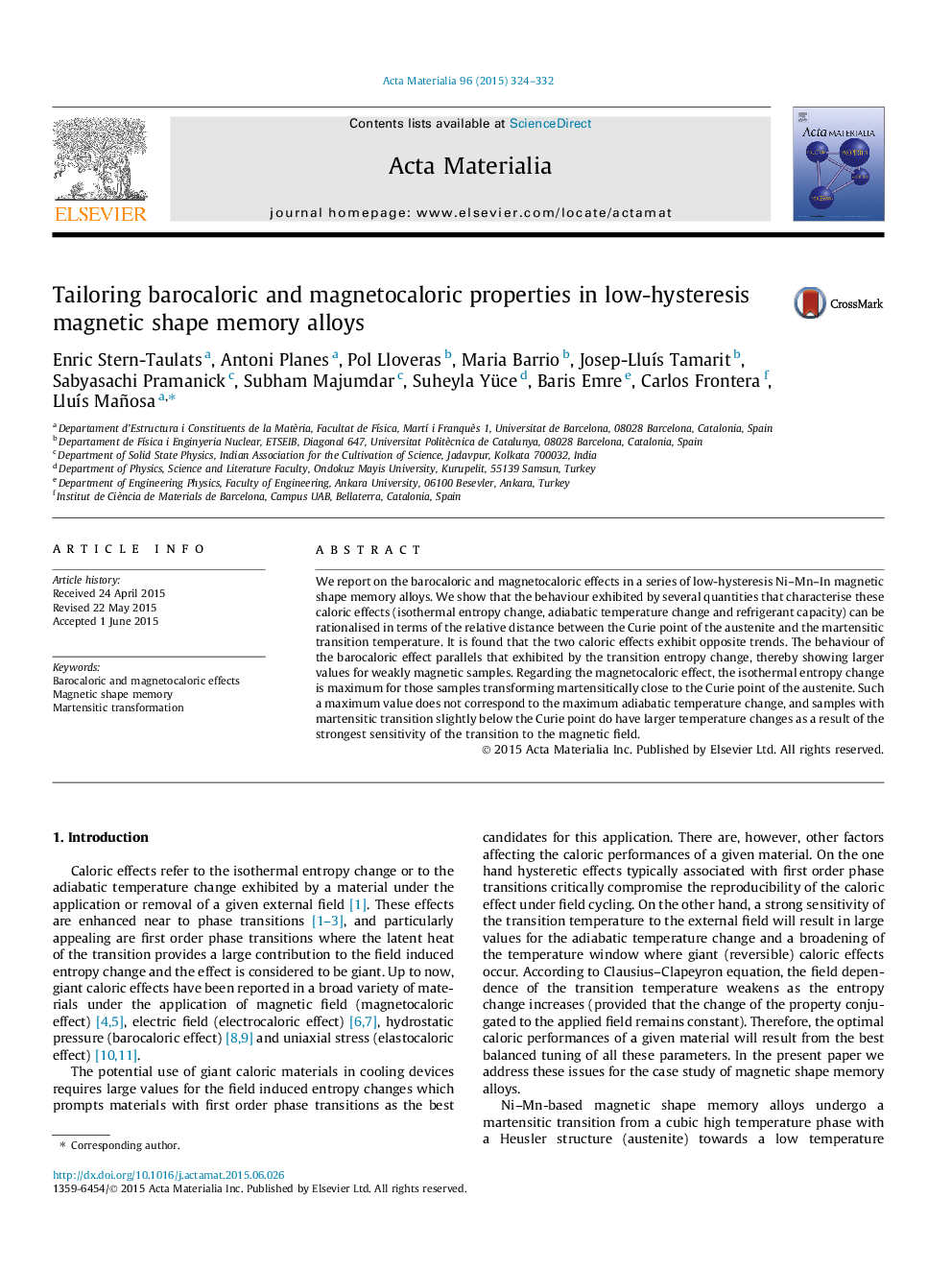| Article ID | Journal | Published Year | Pages | File Type |
|---|---|---|---|---|
| 7879848 | Acta Materialia | 2015 | 9 Pages |
Abstract
We report on the barocaloric and magnetocaloric effects in a series of low-hysteresis Ni-Mn-In magnetic shape memory alloys. We show that the behaviour exhibited by several quantities that characterise these caloric effects (isothermal entropy change, adiabatic temperature change and refrigerant capacity) can be rationalised in terms of the relative distance between the Curie point of the austenite and the martensitic transition temperature. It is found that the two caloric effects exhibit opposite trends. The behaviour of the barocaloric effect parallels that exhibited by the transition entropy change, thereby showing larger values for weakly magnetic samples. Regarding the magnetocaloric effect, the isothermal entropy change is maximum for those samples transforming martensitically close to the Curie point of the austenite. Such a maximum value does not correspond to the maximum adiabatic temperature change, and samples with martensitic transition slightly below the Curie point do have larger temperature changes as a result of the strongest sensitivity of the transition to the magnetic field.
Related Topics
Physical Sciences and Engineering
Materials Science
Ceramics and Composites
Authors
Enric Stern-Taulats, Antoni Planes, Pol Lloveras, Maria Barrio, Josep-LluÃs Tamarit, Sabyasachi Pramanick, Subham Majumdar, Suheyla Yüce, Baris Emre, Carlos Frontera, LluÃs Mañosa,
